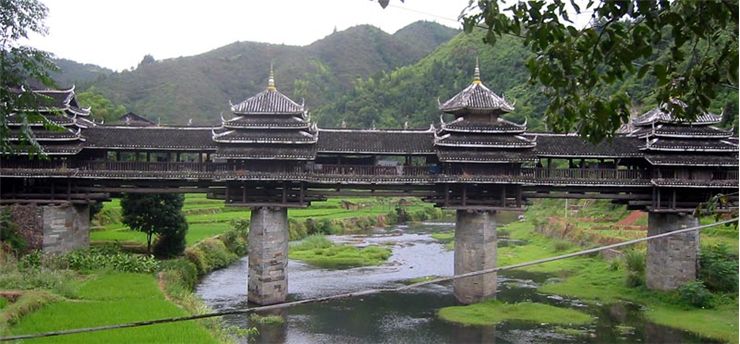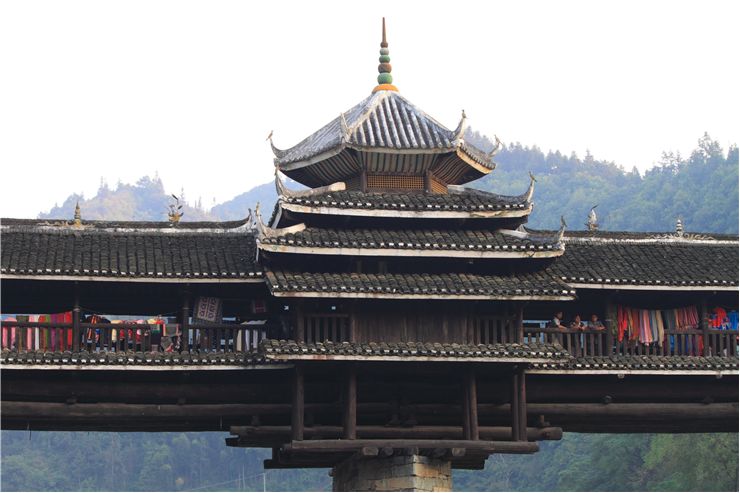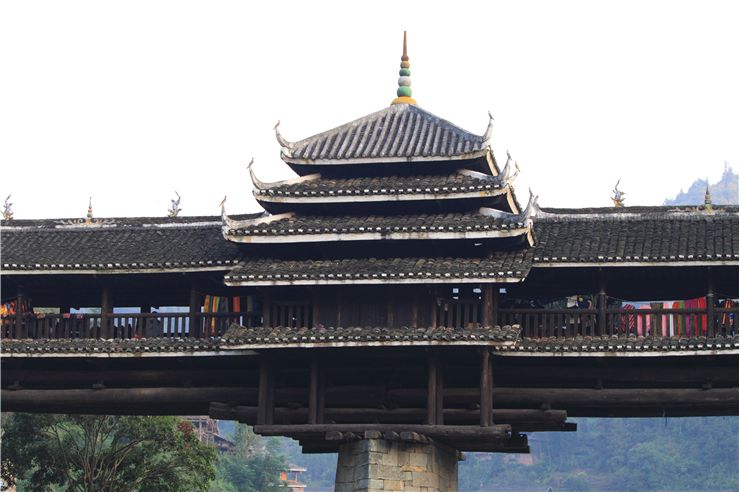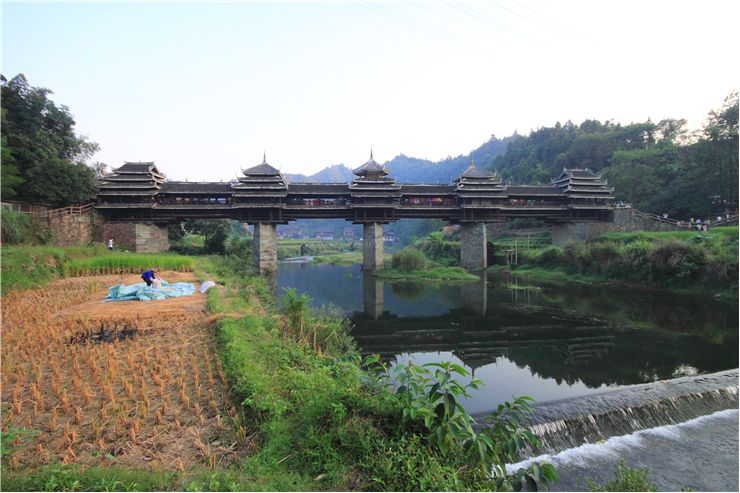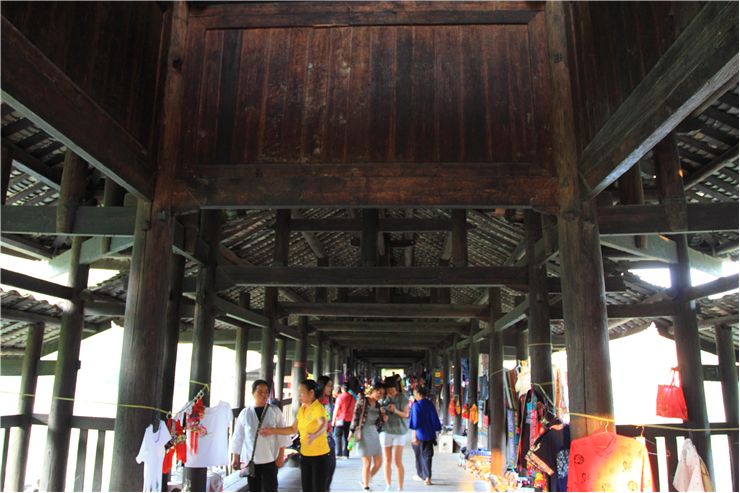Chengyang Bridge - Facts and History of Wind and Rain Bridge
Chengyang Bridge, or a Chengyang Wind and Rain Bridge (also called Yongji Bridge or Panlong Bridge), is probably one of the most famous wind and rain bridges in China.
It is located in Sanjiang County of Guangxi Municipality on the Linxi River between villages of Dong ethnic minority and is built in 1912.
It is 64.4 meters long, 3.4 meters wide and 10.6 meters high.
It is constructed to have five pavilions, with porches and eaves, on three stone piers and three spans between them. It got its name from the ability to protect from natural weather conditions.
It is mainly made of wood but in an interesting way: no nails or rivets are used. All connections are made by dovetailing a wood and despite simple materials, ingenuity of workmanship of Dong people made the bridge so sturdy that bridge still stands and is in constant use. Along the wooden railings, there are benches that are used for relaxation
| Name | Chengyang Bridge |
| Other Name(s) | Chengyang Wind-Rain Bridge, Yongji Bridge, Panlong Bridge |
| Country | People's Republic of China |
| Crosses | Linxi River |
| Location | Sanjiang County, Liuzhou, Guangxi, People's Republic of China |
| Type/Design/Architectural Style | Covered bridge, Lángqiáo |
| Material | Wood |
| Total Lenght | 64.4 metres (211 ft) |
| Number of Spans | 3 |
| Height | 10 metres (33 ft) |
| Opened | 1912 |
